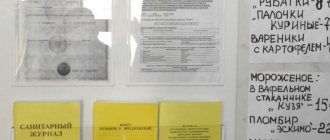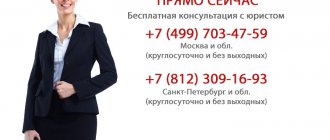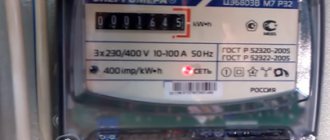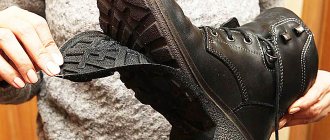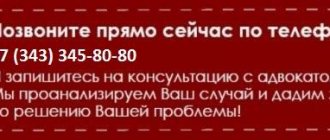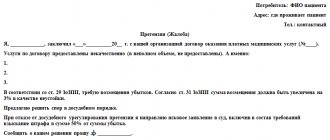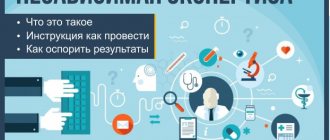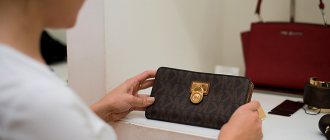Recently, monitoring the quality of clothing has become not just a whim of the buyer, but a real necessity. An independent examination of clothing is a special competent study of the consumer properties (quality) of garments, which is carried out in order to establish the nature of existing defects, the causes and mechanism of their formation. In Moscow, we are professionally engaged in such research - the Scientific Research Institute "Expert-Stolitsa". The examination gives an opinion on the compliance with the quality required for this type of product and the possibility of its use for its intended purpose.
The cost of the examination is from 15,000 rubles
(The cost of the examination depends on the scope of work and the characteristics of a particular case)
Leave a request for an examination
phone: +7 495 101 83 77
Get expert advice
During the examination, the expert determines the presence or absence of defects:
- obvious;
- hidden;
- operational;
- production
Based on the severity of the identified defects, their impact on the quality of the product, as well as the possibility of its further use for its intended purpose, an independent examination of clothing determines their significance and classifies them as insignificant, significant or critical.
Legislation
An examination of clothing is carried out when disputes arise about the quality of goods, works and services.
The PPP is regulated by civil law:
Free HOTLINE:
Moscow time 8 (499) 938 6124
St. Petersburg 8 (812) 425 6761
Fed 8 (800) 350 8362
- Civil Code;
- Federal laws “On the protection of consumer rights”, “On state forensic activity in the Russian Federation”;
- government regulations;
- GOSTs 8765-93, 12566-88, 25295-2003, 4103-82 – “Fur and combined clothing.
- General technical conditions", "Sewing products for household use.
- Determination of grade”, “Outerwear of the coat and suit range. General technical conditions". “Sewing products. Quality control methods".
The clarifications of the Plenum of the Supreme Court are of a recommendatory nature.
What can be achieved
Based on the results of the study, it is established:
- the presence or absence of a deficiency;
- reasons for a defect in clothing: whether the identified defect is a manufacturing defect or the result of using the product for other purposes or in violation of operating rules;
- guilty side.
As a result, you can make a justified claim to the seller, which will allow you to resolve the dispute without going to court.
The results of an independent study may become the basis for ordering a forensic examination when considering a dispute in the future.
Expert conclusions
Based on the results of the product assessment, the expert can make one of three decisions:
- The breakdown occurred due to the fault of the manufacturer
The retail outlet is obliged to satisfy the consumer’s requirements: replace the product with a similar one, make repairs or return money.
- Damage occurred due to improper handling
The buyer's demands cannot be satisfied. He is obliged to reimburse the seller for the funds spent on the inspection.
- The causes of the defect have not been established
In this case, a re-assessment of quality is required. To conduct this, the court can contact the Forensic Expertise Center.

When is verification necessary?
The most common clothing defects:
- Discrepancy between the actual size and that indicated on the product, as well as other violations of GOST. It is necessary to take into account that the discrepancy in size may be a feature of the manufacturer, but this must be specified when selling items. For example, in women's clothing, the upper part of the suit (shirt or jacket) is sewn one size smaller than the trousers or skirt. Defects in the dress may be a feature of the model.
- Disadvantages of materials: stains or the appearance of color transitions, tears in the fabric of the product. For example, sheepskin coats shed or change color in certain areas after snowfall.
- Manufacturing defects. Clothes may have improper cut, sewing and other flaws, which are determined by examining the seams. For example, the seams on trousers curl around the leg when moving as a result of cutting across the grain of the fabric, but during fitting the buyer most likely will not notice this.
- Cleaning clothes. To preserve the declared properties, manufacturers may provide only dry cleaning or establish a ban on dry cleaning. Failure to comply with the rules for using the item by the buyer leads to the fact that the fabric loses its properties and the appearance of the product deteriorates.
- Fur. Appraisers are contacted to determine the quality of fur, its originality and naturalness. For example, it is necessary to check whether the fur coat is made from the fur of a lynx, and not a cat or other animal.
- Leather Products. Research is carried out to check whether the quality corresponds to the declared characteristics on the tags.
Quality control
Outerwear and underwear knitwear
Determining the quality of outerwear knitwear based on defects in appearance is carried out on the front side of the product, laid out freely, without stretching. The inspection begins with a general inspection, which is recommended to be carried out starting from the front of the product, from left to right, from top to bottom. A general inspection of a product that has fasteners is carried out first in a buttoned state, after which the product is unbuttoned and the areas covered by fasteners and individual parts, the collar, sides, and the hem of the bottom of the product are checked. General inspection includes: external inspection of products and measurement of individual parts in relation to structural lines.
External inspection reveals the presence of defects in the canvas: it should not have noticeable defects in structure, pattern, color and shade, wet-heat treatment that affect the appearance and wear resistance; determine the direction and absence of skew of loop rows and columns of knitted fabric; Using light tension in the transverse direction, check the grip of the loops when switching during the knitting process.
During external inspection, they check: the quality of tailoring: the symmetry of the arrangement of paired parts, darts and reliefs on the right and left sides of the product, changing the distances of their location from the edge of the product or its middle, from the bottom of the product, from the angle of connection of the shoulder seam and neckline, from the point of connection of the side seams with armholes; matching the size and shape of paired parts, combining or measuring the correct selection of parts according to the size, pattern, knitting density, laying out the product so that the seam connecting the parts is in the middle of the part of the product being viewed.
If a product has more than one defect, the percentage of quality loss is determined based on the largest defect. If a product has more than two defects, the percentage of reduction in product quality increases accordingly by 10-30%, depending on the number, nature of the defects and the degree of their impact on quality. Defects located in closed areas, as well as on the reverse side of the lining and covers, are taken into account only in cases where they affect the appearance and performance properties of the products.
When determining defects characterized as “subtle”, “noticeable”, “sharply expressed”, it is possible to use the standards established for similar products of domestic production.
Defects are compared with regulatory documents and an examination report or expert opinion is drawn up.
How to properly conduct an independent examination
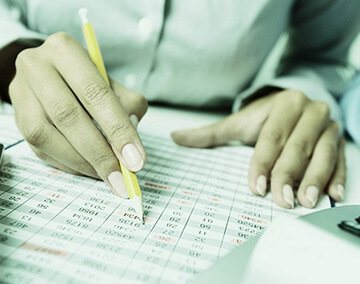
It can be done by private and government experts. After choosing an institution, a contract is concluded. It should contain:
- terms and cost of work;
- questions to be answered by a specialist;
- list of objects submitted for research;
- accompanying documents.
The law establishes that the seller (manufacturer) conducts an examination of the quality of the product at his own expense if a dispute arises with the buyer. The owner of the thing has the right to be present during it and, if he disagrees with the conclusion, to challenge it in court.
The expert compiles the results in a report.
IMPORTANT : when choosing an organization, you must remember that if the quality of the product is damaged due to the fault of the buyer, the cost of expert services is fully paid by the initiator of the inspection
.
If you want to minimize costs, you should take this into account, discuss it with the expert and reflect the following point in the contract: if it is established that the buyer is at fault that the clothes have lost their proper quality, the examination is not carried out, and the customer pays for the result of the work as a consultation or assessment of the quality of the clothes.
How to competently conduct an examination of clothing, procedure
How many stages (from bottom to top) does an independent study take? At the initial stage of merchandising expertise, it is worth determining the purpose of the clothing. It is important to establish why a particular product was purchased and whether it was used correctly. Here are some types of clothes:
- If this is a formal item or clothing for important events, then its main function is the appropriate appearance. This also includes everyday items, which are usually selected according to the individual needs of the buyer.
- Special clothing is necessary in modern production. This type of thing was created for certain working conditions. This could be a military or medical uniform, clothing for people working in hazardous industries, or risking their lives. The quality of such clothing should be at the highest level. An independent examination of workwear can easily be performed at any state expert center.
- Children's clothing can also be subjected to a special state independent examination.
During use, it is important for the consumer to feel comfortable and comfortable in the clothes. Every buyer hopes for a long service life of the product. When purchasing a product at their own expense, the consumer has the right to count on high quality. To ensure that as little defects and poor quality as possible remain on the market, and the quality of the goods provided increases, there is an examination of clothing.
What do you need
An independent study is carried out on the basis of an agreement between the customer and an expert organization. For the conclusion, you need the buyer’s passport, the direct object for research, a receipt for payment, instructions or recommendations for use, if provided.
In the case where the examination is carried out by court decision, a determination is necessary. It sets out the questions that the expert must answer in the report. The list is compiled by the parties at the court hearing.
Who can conduct
An examination of the quality of clothing can be carried out by the seller, the buyer when purchasing goods, a public association of consumers, or Rospotrebnadzor. The inspection procedure may be provided for by regulations or mandatory requirements for technical regulation, as well as the purchase and sale agreement.
Experts
Clothing inspection is carried out as part of the merchandising examination of non-food products. This procedure is not subject to licensing. Participation in the SRO for clothing research is not required.
The specialist responsible for the procedure, in the conclusion, indicates his education, experience in this area and the availability of certificates and accreditation. It is advisable to find out this at the time of choosing an expert organization.
Qualification may influence the outcome of challenging the results of an expert opinion.
Where is it held?
| Firm | address | telephone | Cost and other |
| ANO CISITI "Independent Expertise" | 109147, Moscow, st. Marksistskaya, house 20 | +7 | They provide services throughout Russia, tel: +7 (800) 500-05-94 |
| ANO "Center Expertise" | Moscow (metro station Smolenskaya, Park Kultury), Smolensky Boulevard, 7/9 | (495) 763-51-39, | from 3,000 rub. |
| LLC "Soyuz-expert" | Moscow, metro station Prospekt Vernadskogo, st. Udaltsova, 33, entrance 4, office. 63.; (By appointment, registration is done by phone) and 4 more offices | (495) 236-90-36,, | They work in Moscow, Moscow, Bryansk, Lipetsk regions |
| ANO "Expert Research Laboratory "Central Office" | 197101, Russia, St. Petersburg, st. Kronverskaya, 5, office 535 (we moved to Marata, 53, office 7A) | Free 8-800-234-17-04 +7 +7 +7 | They work in Moscow, St. Petersburg, Omsk. The cost depends on the price of the research object. Minimum 2,000 rub. |
| LLC "Center for Assessment and Expertise" | 1. St. Petersburg, Avtovo metro station, st. Marshala Kazakova, 26, office 42 2. Staraya Derevnya, st. Mebelnaya, 12, bldg. 2, office 105 | +7 (812) 642-7352 +7 (812) 988-2491 +7 (812) 988-2490 | from 1500 rub. |
| Ural Chamber of Forensic Expertise | Ekaterinburg, st. Radishcheva 33, Business Gallery, office. 8 | +7 | from 1000 rub. |
| LLC "Center for Commodity Expertise" | Ekaterinburg, st. March 8, 4, 4th floor | +7 | |
| LLC "NOK Otsenka Plus" | Novosibirsk, st. Krylova, 36, office 414 | +7(383) 291-29-64 | from 2000 rub. |
| LLC Novosibirsk Bureau of Commodity Expertise | Novosibirsk, Krasny pr., 17, of. 611 | 8-913-755-22-39 | from 1400 rub. |
How much does a clothing inspection cost?
The examination of clothing examination, the cost of identifying defects, is formed, as a rule, based on the volume and complexity of the tasks assigned to the specialist, as well as the number of products being examined and identified defects, and the required urgency. The approximate costs of conducting independent examinations of clothing products are given in the price list of our organization.
| Object of examination | Cost of examination of 1 product, rub. |
| Fur coats, sheepskin coats | from 5 500 |
| Jackets, coats | from 5 000 |
| Clothes 2 layers: trousers, T-shirts, jeans, sweaters, shorts, sweatshirts, shirts, etc. | from 3 500 |
| Lingerie, swimwear | from 2 500 |
| Accessories | from 2 000 |
| Consultation in the presence of the parties | 1000 rub. (oral conclusion) |
| Judicial examination | From + 2,000 rub. |
Individual cost calculation
By calling or writing to the specialists of our organization ECC “Grafo-Logos” LLC, you will receive free advice on issues of interest, as well as a final estimate of the cost of the examination.
How is clothing quality assessed?
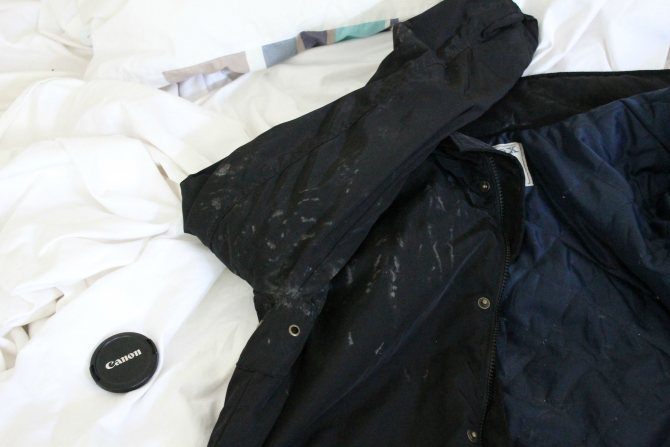
Research If you have questions and the need to investigate the quality of clothing products and the impossibility of resolving a conflict situation with the other party peacefully, you can call our organization LLC ECC "Grafo-Logos" and get specialist advice absolutely free. To do this, you need to describe in detail the defects of the product for quality assessment, provide information about the date of its purchase, service life (if any), and also describe the situation as accurately and in detail as possible. To better understand the essence of the problem that has arisen, a specialist may suggest that you send photographs to an email address, or bring the product to the office for inspection.
Based on the results of the consultation and research, the cause of the formation of defects/deficiencies will be determined. If the problem that arises is atypical, or raises any doubts and requires more detailed study, the answer may be provided to you after some time. After consultation, the client has the opportunity to decide on the advisability of conducting a merchandising examination of clothing. If a positive decision is made, the client must agree with the specialist on the date, place and time of the examination, and it is also recommended to notify the other party about this.
To conduct an examination of clothing to inspect defects, it is advisable to provide all documents remaining after purchase, such as: receipts, care instructions, tags, labels, boxes, warranty cards, contracts with the seller, etc., as well as claims, letters and other documents (if their availability). On the appointed day, the customer of the examination must appear at the appointed place and time and be present during the inspection. The absence of a second party properly notified of the examination does not mean that the inspection cannot be carried out - in the absence of the second party, an act is drawn up where a note is made that the representative of this party was absent. Based on the results of the work done, the customer of the examination is given a conclusion along with a package of documents from the organization and the specialist.
Ask your question to an expert
Examination of clothes after dry cleaning
Given the large number of types of fabric, knitted fabrics, as well as other materials, such as leather, fur, used for the manufacture of outerwear, caring for such products at home can be difficult, if not completely undesirable. In this case, the only way to clean outerwear is dry cleaning. Sometimes when handing over an item to the dry cleaner, it is difficult to imagine that the result of the service may be a damaged item, and at the same time the mood of its owner. In order to avoid such a situation, it is necessary to carefully study the information entered by the dry cleaning employee in the act upon acceptance of the product. If you disagree with the amount of wear of the product, as well as other information that, in your opinion, was distorted, it is not recommended to carry out cleaning in this establishment. If controversial situations arise and defects are identified, there is always the possibility of their resolution amicably, however, if the other party does not agree with your claim, the only option is to conduct a chemical-technological examination of the clothes after dry cleaning and go to court.
In the expert-consulting room, examinations are carried out: footwear examination, commodity examination, examination of fur products, examination of jewelry, gemological examination, etc.
Examination of clothing defects
The term “defective product” means that the product to which this definition is applied was manufactured in violation of the requirements of regulatory documentation or deviations from it. As a rule, product defects are identified and eliminated at the production stage, but there are situations when goods with discrepancies end up in the hands of consumers. In this case, the task that is set before the commodity expert is to determine whether the discrepancies/deviations of the goods were acquired during the operation of the object by the user for its intended purpose, or whether it is all due to a violation of technology, the use of low-quality raw materials, and other factors associated with production . There are several ways to determine the causes of defects, the most reliable and frequently used of them are: organoleptic (using the senses), as well as instrumental (using a universal measuring instrument) and laboratory (using sophisticated equipment). Which method will be used remains at the discretion of the specialist, and also depends on the complexity of the tasks assigned to the study.
How it goes
What things are subject to inspection?
Things with defects, that is, goods of inadequate quality, are subject to examination (Part 1 of Article 21 of the Law “On Protection of Consumer Rights”).
What is being checked
An examination of clothing is carried out to determine proper quality. To do this, compliance with GOSTs is checked - visually and using comparisons and measurements. Identified defects are recorded in photographs and described in the report. If necessary, laboratory tests are carried out on fabric fibers or, for example, fur structure.
Duration of the study
Art. 21 of the PZPP stipulated that the requirement to replace goods of inadequate quality must be satisfied within seven days; in the case of additional verification of the quality of the goods by the seller, a period of 20 days is established from the date of presentation of the demand.
Who pays
The results of the examination, confirming the buyer’s requirements, are also the basis for the recovery of all costs of verification from the seller (clause 2 of article 13 of the PZPP). If the buyer is found to be at fault in the occurrence of identified defects, he will pay the costs of the research conducted by the expert.
In practice, the buyer initially pays for the examination. How much he will spend depends on the cost of the clothes and the city in which he lives.
Conclusion
The requirements for the form of conclusions of private expert organizations are not established by law. The most important part of the report is the results of the research and the answers to the questions posed to the expert.
What to do next
Having received an expert’s opinion confirming the sale of clothing of inadequate quality, the buyer has the right to file a claim with the seller. If he fails to act, it is most effective to go to court to protect your rights and interests.
What can we demand?
The inspection found that the product does not meet the declared characteristics or has significant defects. In this case, the buyer has the right to demand:
- replace clothes with quality ones;
- reimburse the costs of conducting an independent examination;
- refund of the amount paid for the purchased product;
- reimburse the costs of bringing the clothes into proper condition.
- compensation for damage caused.
Payment for experts' work
Initially, the customer pays for the research. But subsequently he may demand reimbursement of expenses from the party to the conflict through whose fault the deficiency arose.
For example:
- Most often, the study is ordered and paid for by the seller or manufacturer. But if the expert comes to the conclusion that the item is damaged as a result of careless use, then the buyer will have to reimburse all costs.
- If a consumer has applied for a quality assessment, he will be able to demand compensation for payment from the store only if the defect is recognized as a factory defect.
